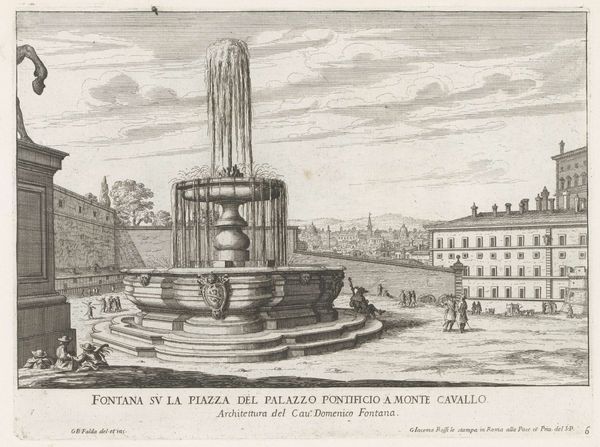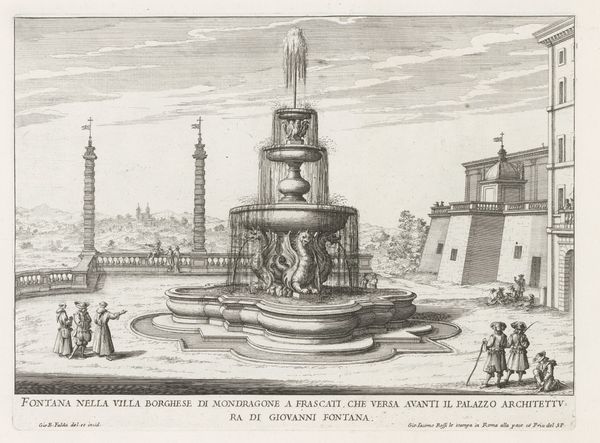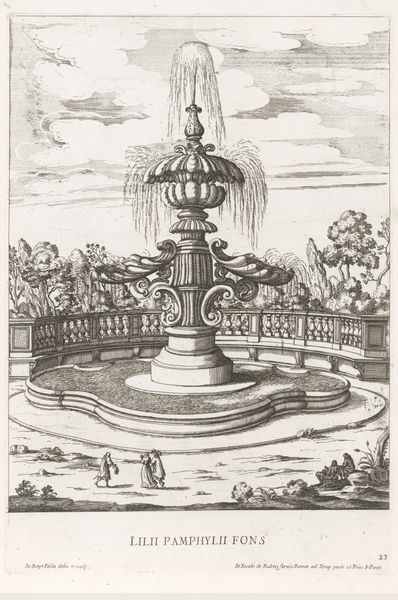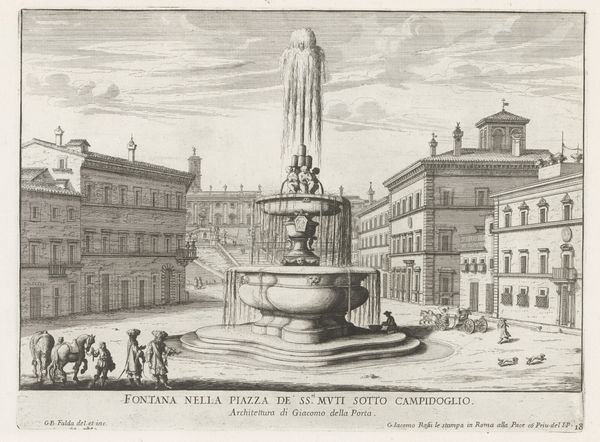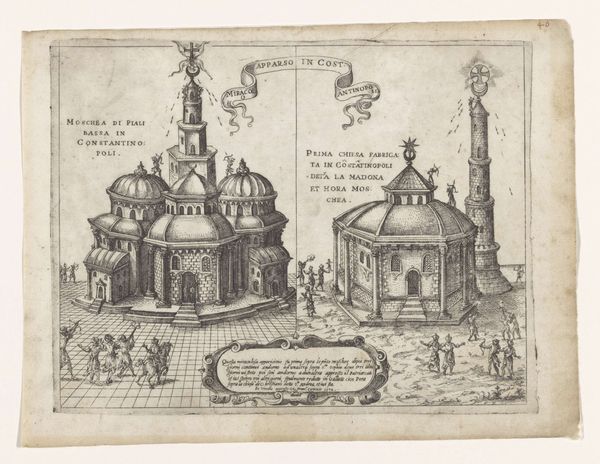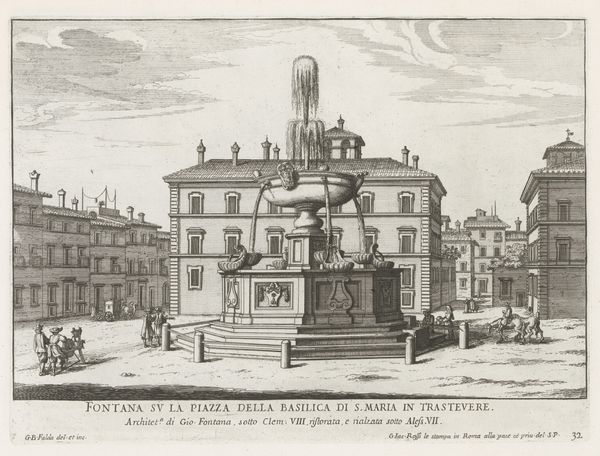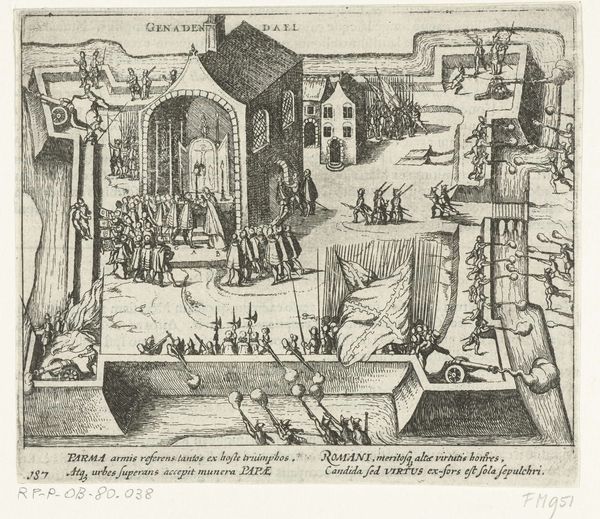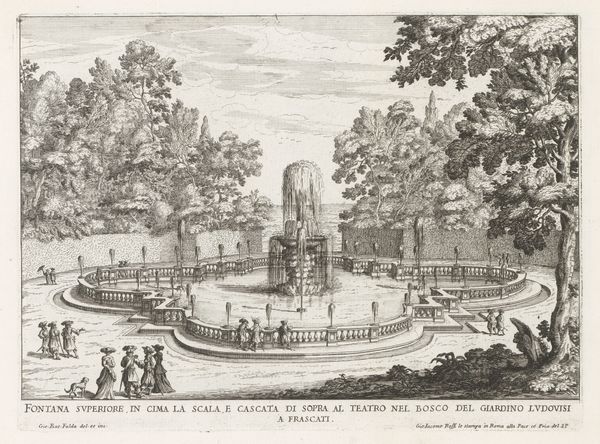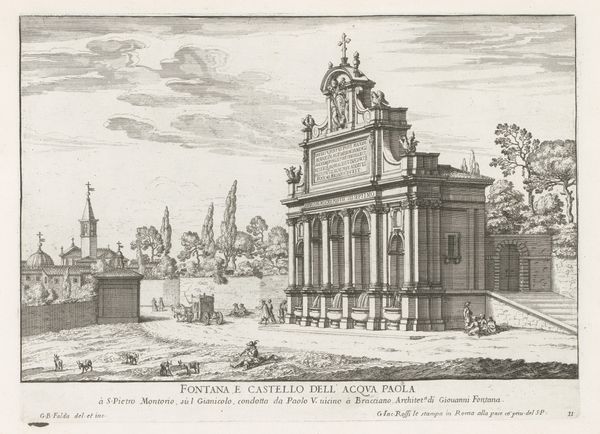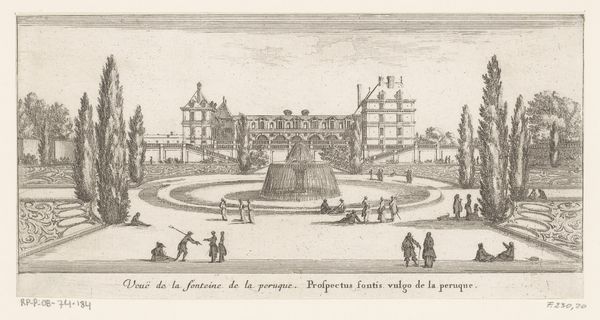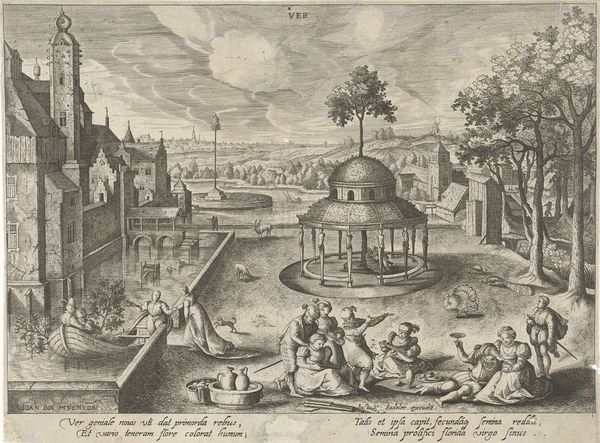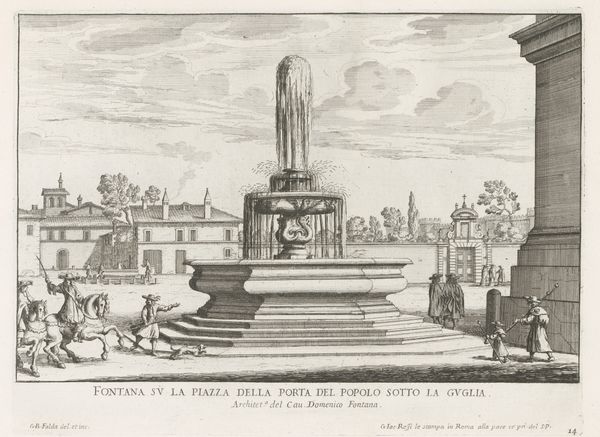
print, etching, engraving
#
baroque
# print
#
etching
#
old engraving style
#
landscape
#
engraving
Dimensions: height 212 mm, width 287 mm
Copyright: Rijks Museum: Open Domain
This print of a Vatican fountain was made by Giovanni Battista Falda in the late 17th century. It’s an etching, a printmaking technique that involves using acid to cut lines into a metal plate, which is then inked and pressed onto paper. Falda’s skill is evident in the fine lines that define the fountain’s cascading water and the surrounding architecture. Look closely and you'll see the marks left by the etching needle, each one carefully placed to create a sense of depth and texture. This wasn't a quick process; it required patience and precision. The print also captures a moment in time, with workers and elegant figures populating the space around the fountain. Falda is representing a symbol of power and luxury. Consider the labor involved in building and maintaining such a structure, and the social context of its creation. By focusing on the materials, the etching process, and the social landscape it depicts, we can start to understand the full significance of Falda's work.
Comments
No comments
Be the first to comment and join the conversation on the ultimate creative platform.
